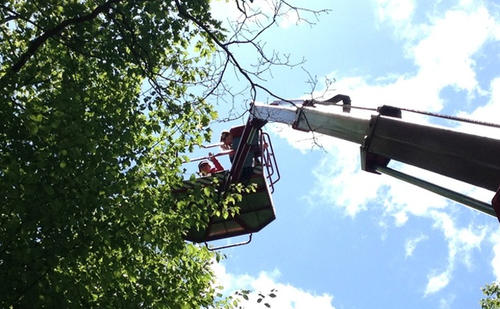
New findings by researchers from the University of Minnesota College of Food, Agricultural and Natural Resource Sciences (CFANS), who partnered with scientists from across the world, suggest plant respiration is a larger source of carbon emissions than previously thought, and warn that as the world warms, this may reduce the ability of Earth’s land surface to absorb emissions due to fossil fuel burning.
The new findings, published in the journal Nature Communications, are based on the comprehensive GlobResp database, which is comprised of more than 10,000 measurements of carbon dioxide plant respiration from plant species around the globe. Merging this data with existing computer models of global land carbon cycling shows plant respiration has been a potentially underestimated source of carbon dioxide release. The study shows carbon release by plant respiration may be around 30 percent higher than previously predicted.
As the mean global temperature increases, the researchers estimate respiration will increase significantly. Such increases may lower the future ability of global vegetation to offset carbon dioxide emissions caused by burning fossil fuels. CFANS Forest Resources Department Professor Peter Reich, Postdoctoral Associate Ethan Butler, Research Fellow Kirk Wythers and Research Associate Ming Chen teamed up with lead author, Chris Huntingford, of the United Kingdom’s Centre for Ecology & Hydrology, and 15 other physiologists and modelers in the work.
“Plants both capture carbon dioxide and then release it by respiration. Changes to either of these processes in response to climate change have profound implications for how much ecosystems soak up carbon dioxide emissions from burning fossil fuels,” said Huntingford.
“Once we incorporate this data into state-of-the-art carbon cycling models, we are much closer to being able to accurately model carbon cycle feedbacks for climates across the globe,” said Reich. “In fact, this study provides the most up-to-date accounting of respiratory carbon releases from plants in terrestrial systems.”
“The implications of this study are enormous,” Ming emphasized. “The fact that plant respiration is likely 30 percent higher than previous estimates should warn all global modelers that an updated inspection is warranted regarding how we model carbon flows in and out of terrestrial ecosystems globally.”
#
Lead author: Professor Chris Huntingford, Climate Change Scientist, at the Centre for Ecology & Hydrology, UK. Email: [email protected]. Tel: +44 (0)7884437138.
Paper details: Huntingford, C., Atkin, O.K., Martinez-de la Torre, A., Mercado, L.M., Heskel, M.A., Harper, A.B., Bloomfield, K.J., O’Sullivan, O.S., Reich, P.B., Wythers, K.R., Butler, E.E., Chen, M., Griffin, K.L., Meir, P., Tjoelker, M.G., Turnbull, M.H., Sitch, S., Wiltshire, A. and Malhi, Y. (2017) Implications of improved representations of plant respiration in a changing climate. Nature Communications. DOI: http://doi.org/10.1038/s41467-017-01774-z
###
About University of Minnesota College of Food, Agricultural and Natural Resource Sciences
The University of Minnesota College of Food, Agricultural and Natural Resource Sciences (CFANS) brings science-driven innovators together to discover hands-on solutions to global challenges. With 10 research and outreach centers across Minnesota, the Minnesota Landscape Arboretum, and the Bell Museum of Natural History, CFANS offer unparalleled experiential learning opportunities for students and the community. For more information, visit cfans.umn.edu.
- Categories:
- Science and Technology





